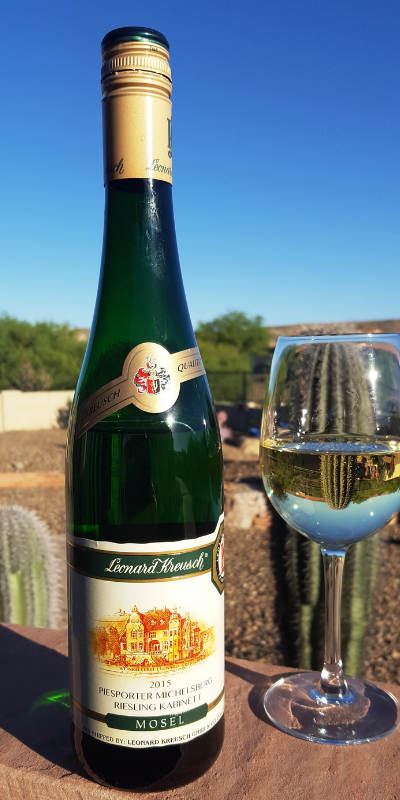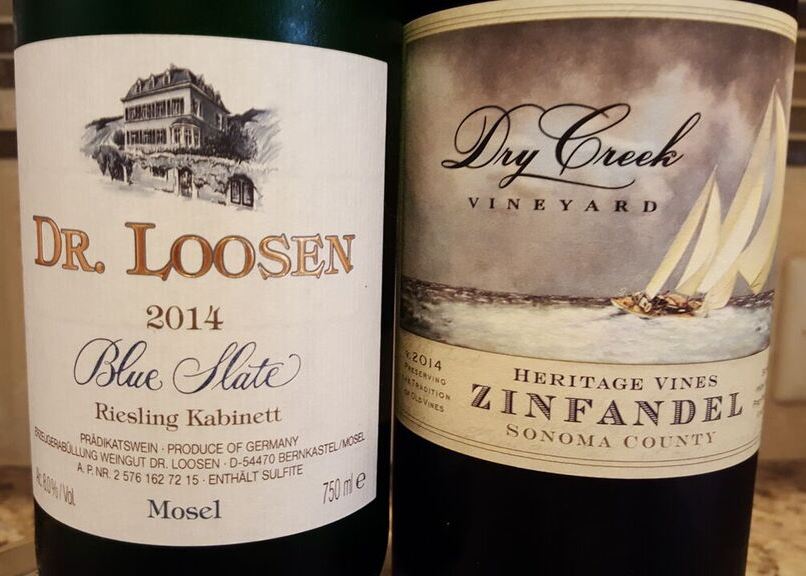Occasional Wines (Alcohol levels in wine)
 Everybody knows that wine is at its essence fermented grape juice, but many wine enthusiasts do not realize the important role the percentage of alcohol plays in the style of a particular wine.
Everybody knows that wine is at its essence fermented grape juice, but many wine enthusiasts do not realize the important role the percentage of alcohol plays in the style of a particular wine.
Basically, fermentation is the conversion of sugar into alcohol and carbon dioxide through the action of yeast. The sugar levels in grapes as well as the influence of the winemaker will determine the percentage of alcohol in the finished wine.
Grapes harvested for wine production can have varying levels of sugar depending upon a number of factors: the particular grape variety, the climate in which the grapes are grown, the yield per acre, and the degree of ripeness when they are picked. Two quick examples: grapes grown in a cool climate will ripen with a lower sugar content than those grown in a hot climate and the sugar level in the Grenache grape will be higher than that of the Syrah grape when at the same stage of ripeness.
Winemakers exercise a good deal of control on what percentage of the sugar within the grape juice is converted to alcohol during fermentation. This is done primarily through selecting the appropriate yeast strain, fermentation temperature management, and the use of sulfur dioxide, which when added will halt the fermentation. The style of wine desired will dictate the level of residual sugar and alcohol.
So what does all of this wine science mean to the consumer? Knowing the approximate alcohol level in a particular wine is like having one piece of the puzzle, helping the buyer understand what to expect out of a bottle of wine. Wines with low alcohol levels (below 11%) often possess a lighter body and have a perceptible sweetness. Wines such as Moscato D’Asti and Auslese level German Rieslings fall into this category. Conversely, wines with high alcohol content (14% or more) will be perceived as rich and full-bodied, bringing out the ripeness in the fruit flavors; think Australian Shiraz and Lodi, CA Zinfandel.
 There is no “best” when it comes to alcohol percentage. It is just an element of the wine’s style. Think violin vs. cello; each is capable of producing music that is beautiful. The key to a wine’s deliciousness is that all of its elements: sweetness, acidity, tannin, alcohol & body are in balance. The alcohol in wine should be well integrated and support the other elements. Wines that have obvious alcoholic characteristics: e.g. a burning sensation after you have swallowed, are considered out-of-balance and therefore undesirable.
There is no “best” when it comes to alcohol percentage. It is just an element of the wine’s style. Think violin vs. cello; each is capable of producing music that is beautiful. The key to a wine’s deliciousness is that all of its elements: sweetness, acidity, tannin, alcohol & body are in balance. The alcohol in wine should be well integrated and support the other elements. Wines that have obvious alcoholic characteristics: e.g. a burning sensation after you have swallowed, are considered out-of-balance and therefore undesirable.
One caveat – Producers are permitted quite a bit of latitude when listing the alcohol by volume (ABV) on the label and can be off by as much as 1.5% in the US. European winemakers have less leeway: only one-half a percentage point. The reason that a producer would intentionally under-report the ABV in wine often boils down to either marketing purposes - appealing to consumer taste preferences, or for reducing their tax liability as a tax on alcoholic beverages is often calculated by the percentage of ABV, So use the ABV on the label as a general guideline.
 When it comes to selecting wines partially based on the alcohol content there are a couple of very general guidelines: The best summer patio/picnic wines are usually lower in alcohol. Low alcohol wines tend to be higher in acid, and many can be served chilled, therefore more refreshing when the mercury rises. Conversely, higher alcohol wines are richer and frequently opened during meals while dining out of the hot sun. Lower alcohol wines pair well with lighter fare: think salads and seafood. High alcohol wines call for heavier fare. With that said, you should always drink what you like, whenever the season or the occasion.
When it comes to selecting wines partially based on the alcohol content there are a couple of very general guidelines: The best summer patio/picnic wines are usually lower in alcohol. Low alcohol wines tend to be higher in acid, and many can be served chilled, therefore more refreshing when the mercury rises. Conversely, higher alcohol wines are richer and frequently opened during meals while dining out of the hot sun. Lower alcohol wines pair well with lighter fare: think salads and seafood. High alcohol wines call for heavier fare. With that said, you should always drink what you like, whenever the season or the occasion.
Tom Oetinger holds an advanced certification in wine & spirits from the WSET in London, England, and is available to answer your wine questions at [email protected]






